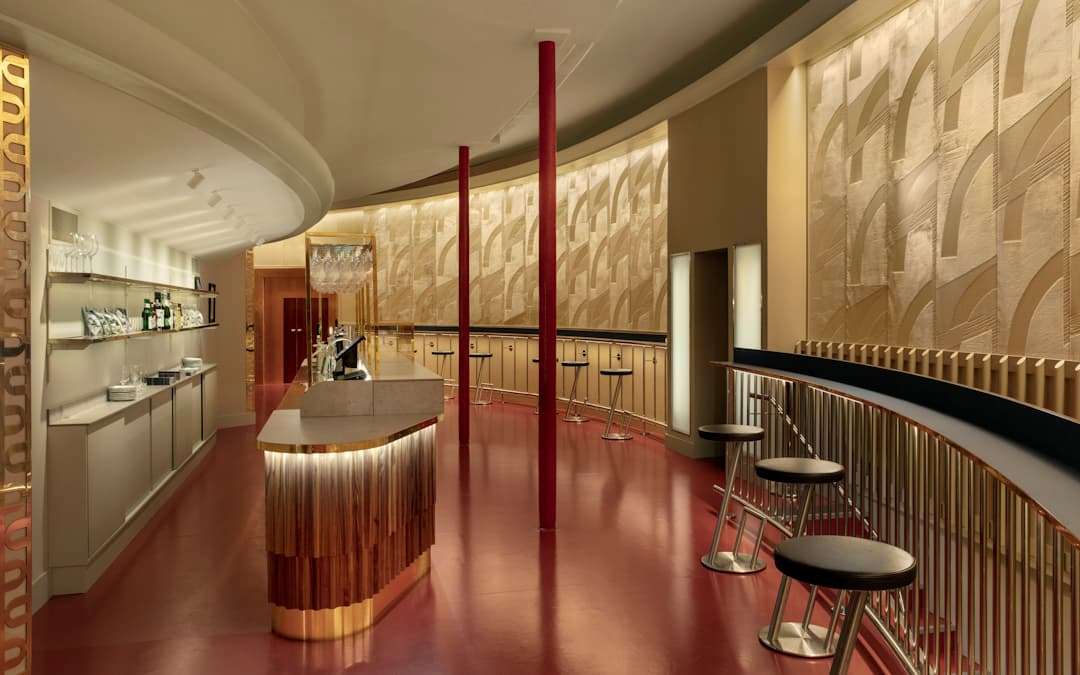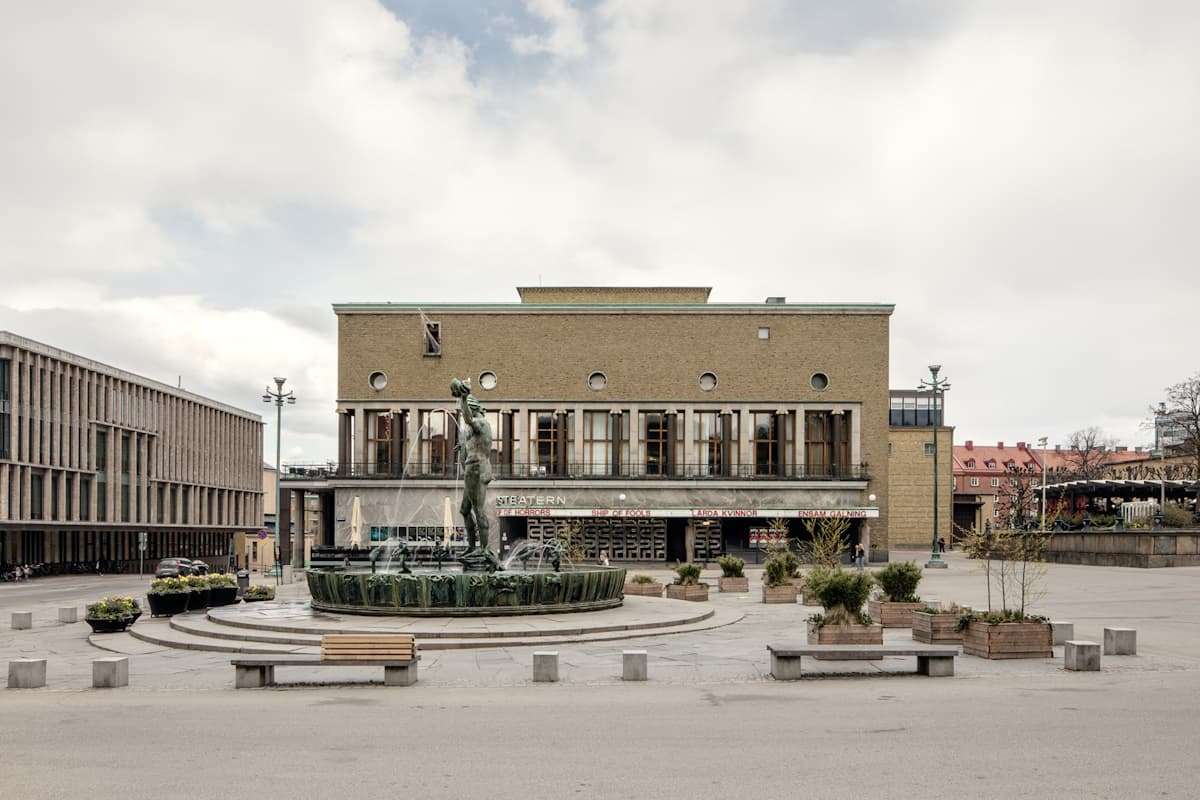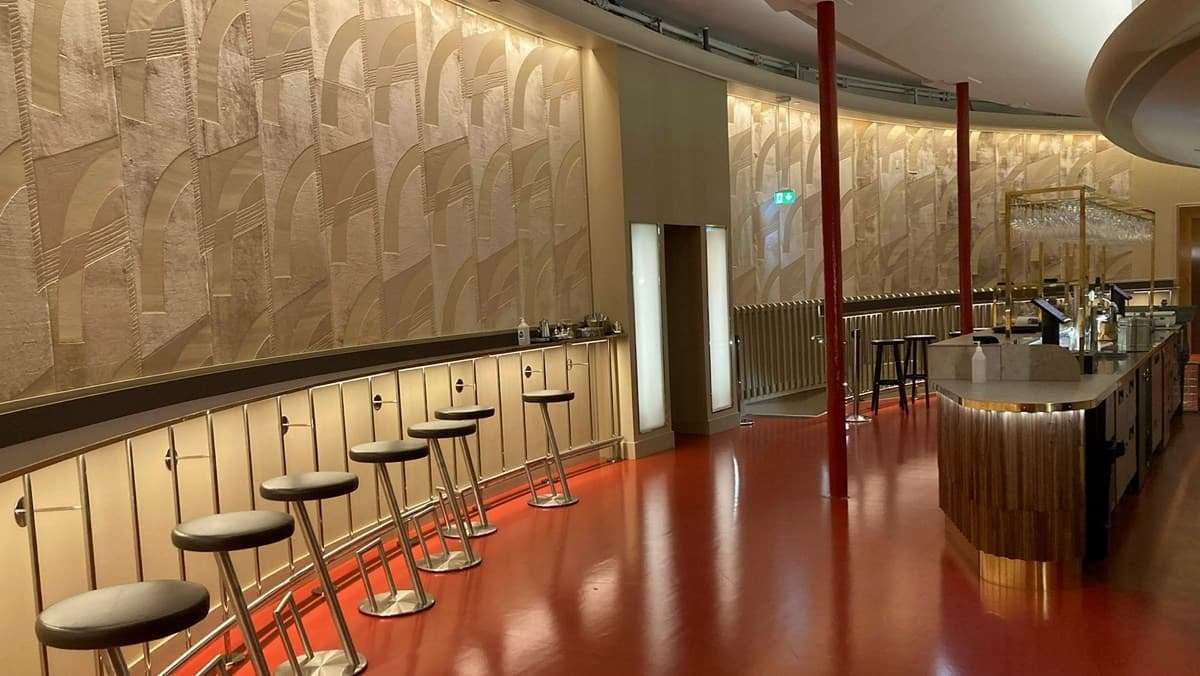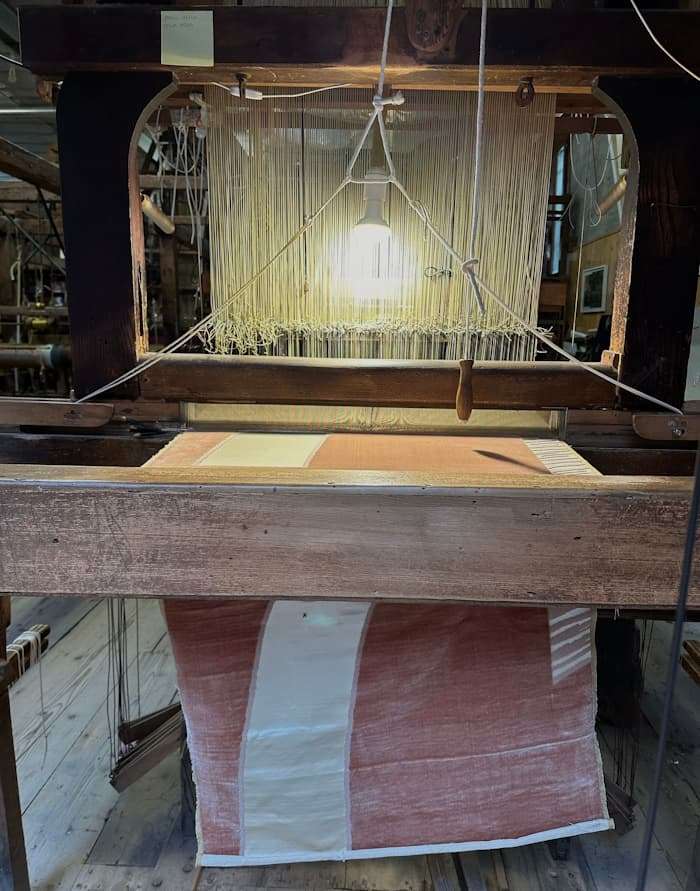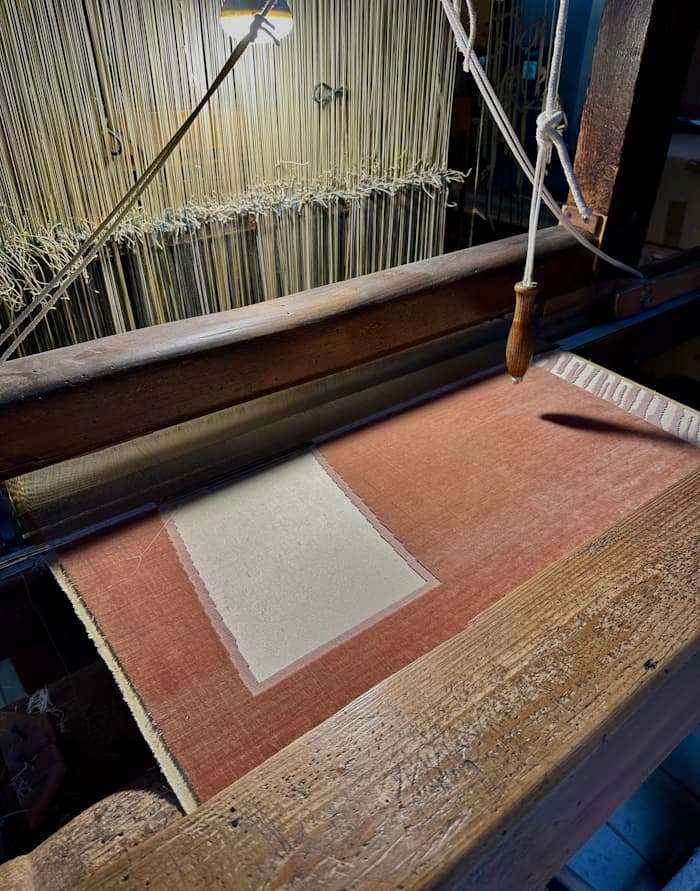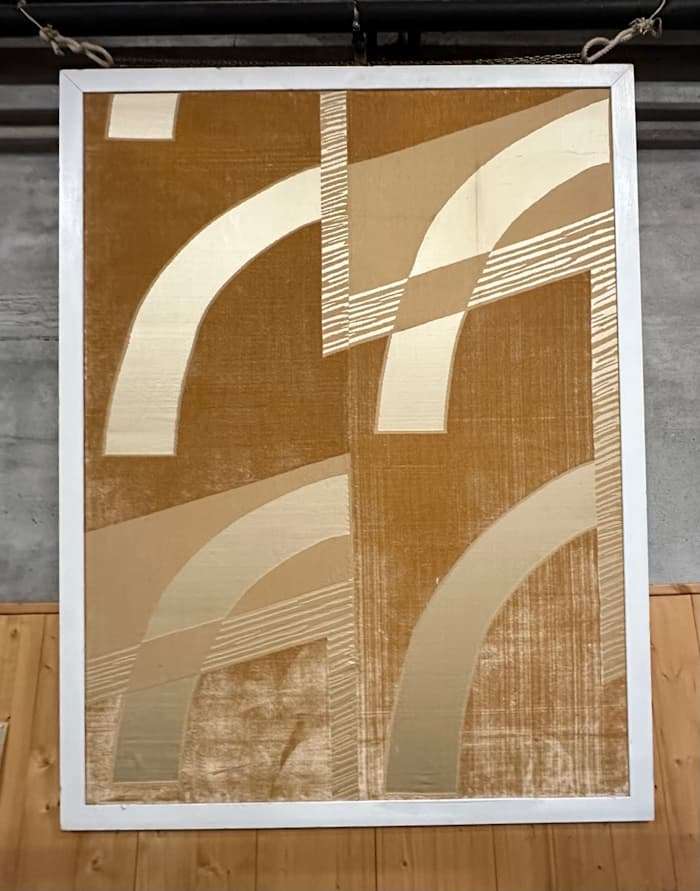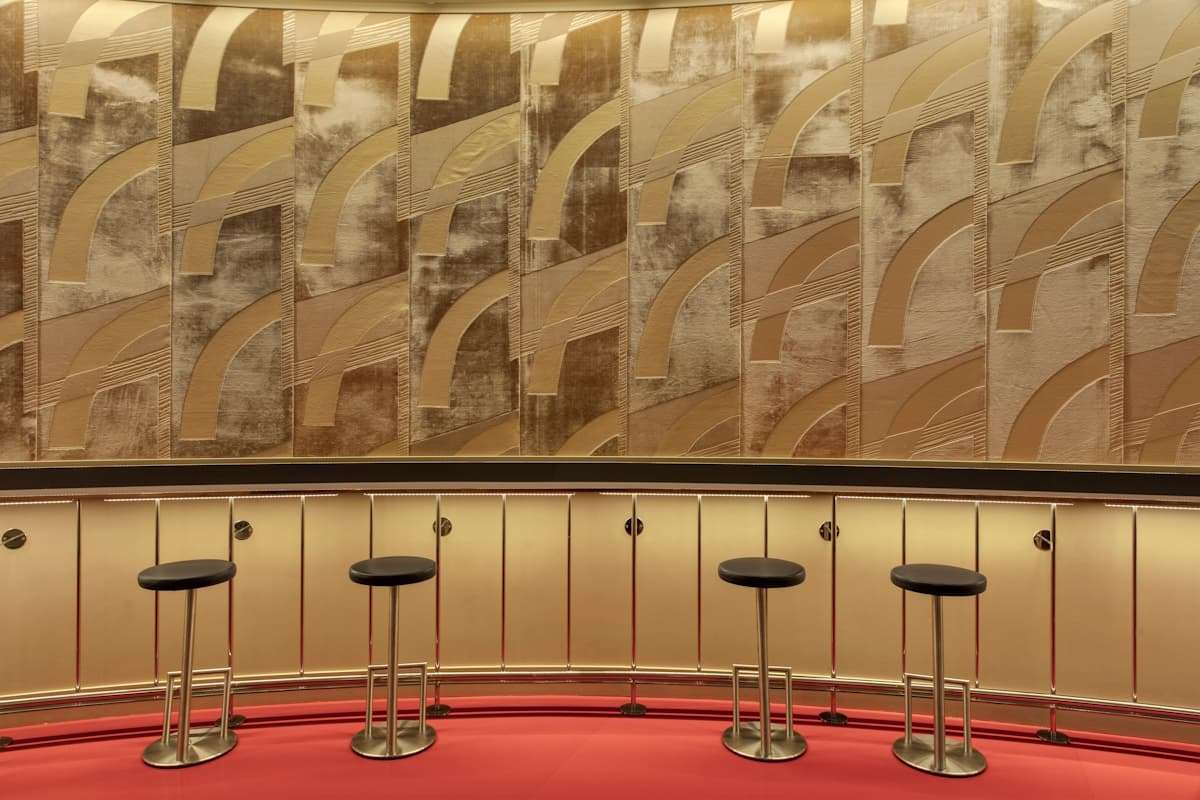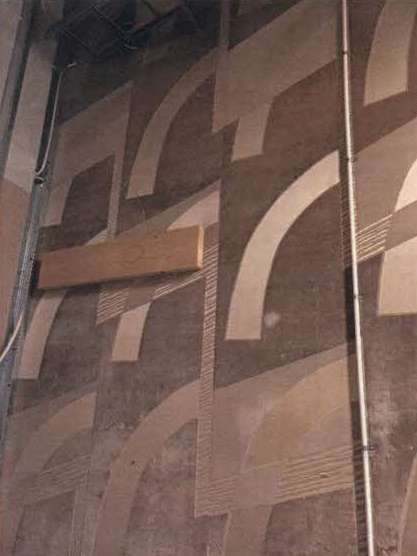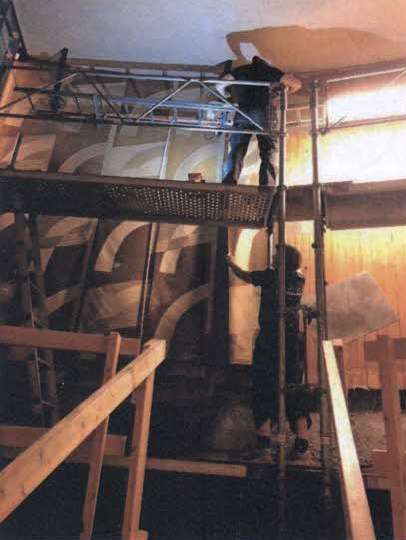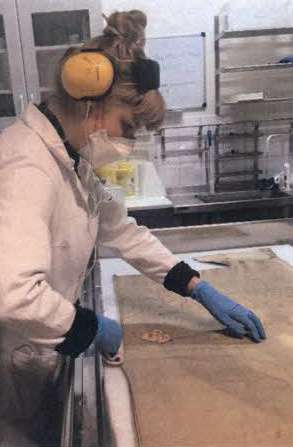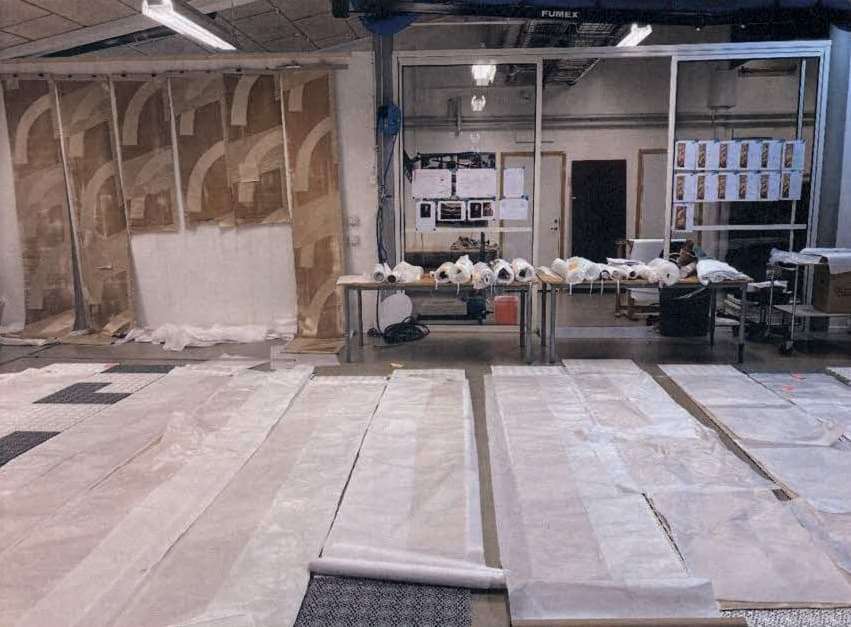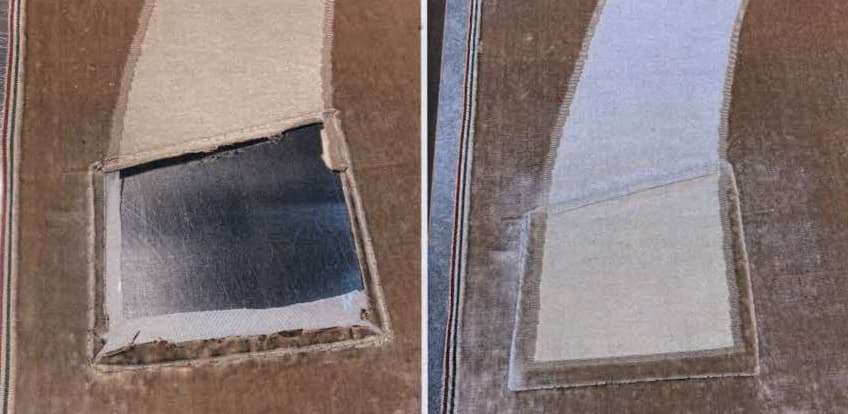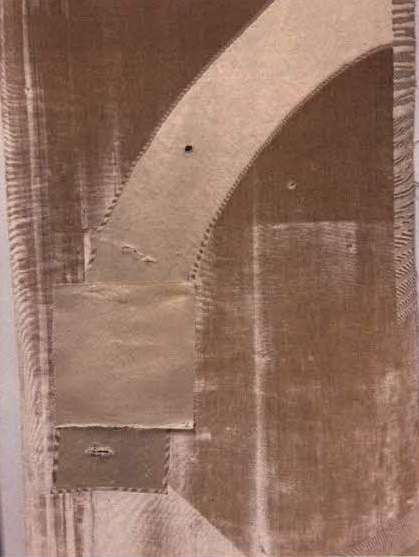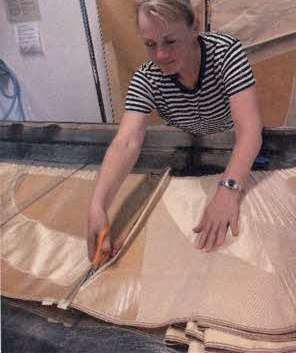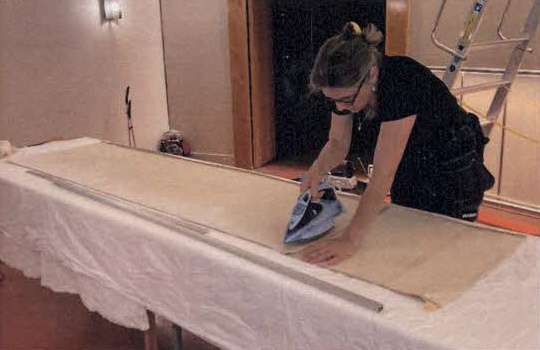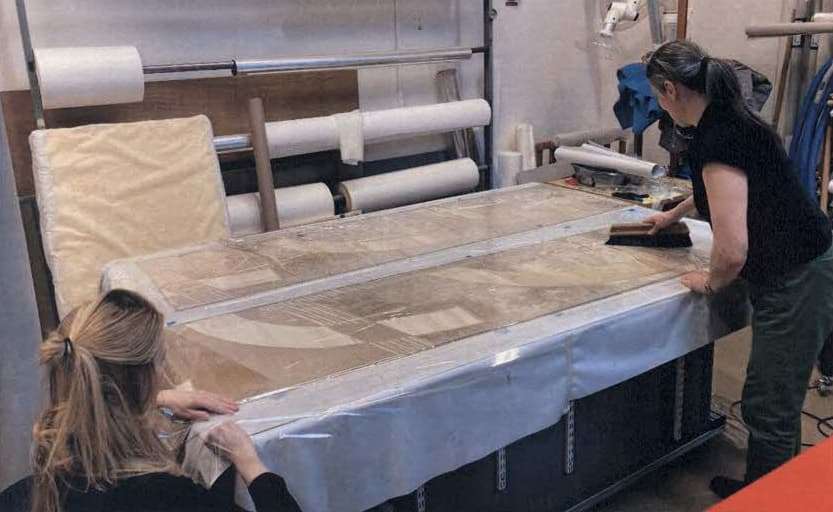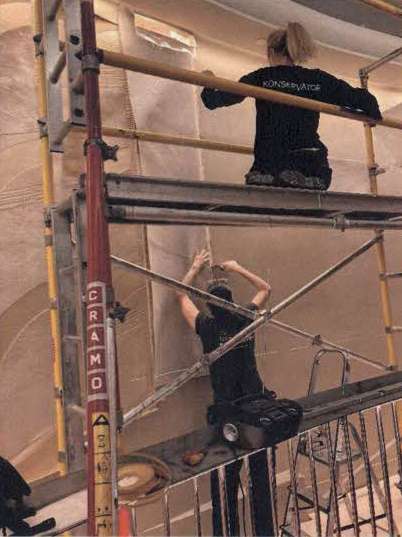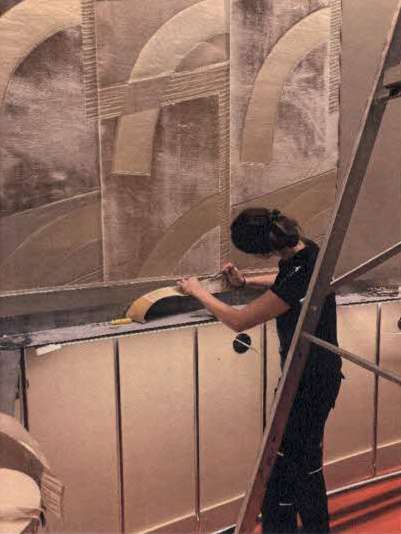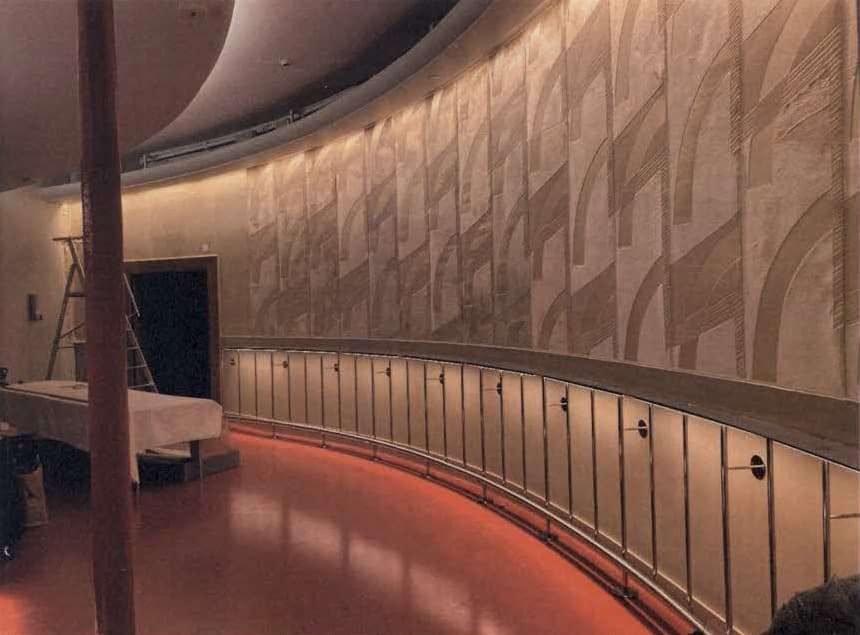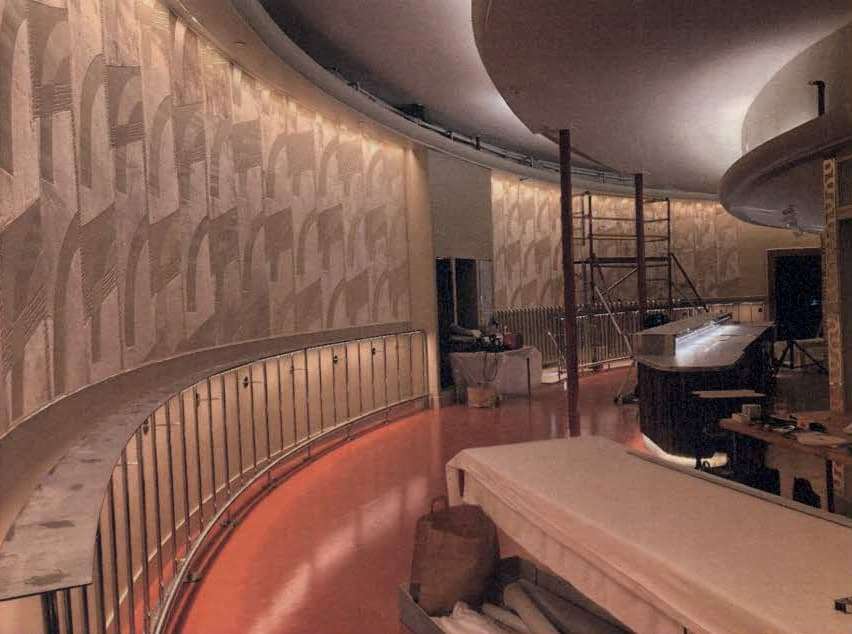Let’s explore the delicate and fascinating process of restoring the precious velvet “Deco” wallpaper in the Stadsteater, or City Theater in Gothenburg, Sweden. A work that restored a unique piece of textile history and art to its original splendor, made by our Tessitura in the 1930s.
A Brief History of the Gothenburg Theater and Deco Velvet
In September 2021, the Gothenburg City Theater reopened its doors after a year of closure, presenting the result of an extraordinary restoration work to the public. Commissioned by the municipal corporation Higab and executed by Studio Västsvensk Konservering, the project was driven by the vision of preserving the legacy of the theater built in 1934 during the transition between classicism and emerging modernism, paying great attention to interior details. The theater, the city’s main venue for performing arts and declared a protected building in 2017, is one of the rare examples of Art Deco in Sweden.
The Gothenburg City Theater
At the heart of this project is Thalia, the new foyer bar, a jewel added to the theater during the renovation. Its back wall had Deco velvet panels in poor condition. There was a desire to restore this velvet and make the wall the main feature of the new bar.
Bar Thalia at the Gothenburg City Theater
Along the curved wall runs a narrow, wall-mounted bar top with stools arranged at regular intervals. Below the top, the wall was strategically fitted with a coffered panel that thus reduced the part to be covered with Deco velvet. On the opposite side, there is a wooden bar counter with gold metal details. The floor is red and shiny. The Deco velvet, with geometric elements of clear Art Deco inspiration, was made in an ivory color called “Isabella,” which takes on golden gleams due to the changing reflection of light on the silk threads.
This soprarizzo velvet is a textile masterpiece handmade in our Tessitura between 1932 and 1934, based on a drawing by architect Carl Bergsten, designer of the Theater. It also originally covered the walls of the main auditorium. Since then, the auditorium has been redesigned and the walls changed, but the velvet wallpaper has been retained behind the new walls. Fortunately, the theater had kept two rolls of velvet from the time of its construction, which were used in the restoration to replace the excessively damaged parts.
Deco Soprarizzo is still woven today by hand on our 18th century looms, but it is an extremely exclusive fabric.
In a previous article, we explored its history and characteristics, doing justice to its exclusivity and precious beauty. With the same design, we also produce the Göteborg heddle velvet today.
The Meticulous Restoration Work: From the Initial Stages to The Final Assembly
The restoration of the Deco velvet was a handcrafted process divided into several stages. First, during a preliminary visit, the wallpaper was inspected in its original context, revealing surface dirt, stains, and damage of various kinds. The plasterboard had been attached directly to the wallpaper, and it is very likely that smoking had been allowed on the premises, so over time the velvet became a filter for the dust that was released into the air.
A series of cleaning tests showed that cleaning with water could not be done, requiring the intervention of a specialized laundry in Gothenburg. Dry cleaning with hydrocarbons proved to be the gentlest and most effective method, even to regenerate the organic component of the silk.
The subsequent disassembly required great care and attention to detach the velvet pieces from the walls and separate them. They had been sewn together, some by machine, some by hand, and some glued to panels. After being cataloged, they were transported to SVK headquarters for freezing at -30 degrees C, which was necessary to prevent any pest attacks.
The stages of the Deco Velvet restoration – Photo gallery
During this stage the condition the velvet was discovered in more detail and it was surprisingly positive, although damage in the form of holes and wear had to be addressed. The fabrics were transported to the laundry for cleaning, as a result of which the fabrics became significantly cleaner and fresher on both front and back. At the same time, however, the treatment wore them down, especially in the smooth satin sections (the curved bands). Since the wallpaper was very dirty, it was decided to continue the treatment and reinforce the material later with a suitable backing.
The actual restoration process involved the use of lamination to reinforce each piece of fabric. This method, commonly used in textile painting and conservation, involved applying a fireproof liner to the back of the wallpaper with a heat-activating adhesive layer. The damaged parts were carefully repaired, using hand-dyed fabrics to replace original sections.
Reassembly of the restored fabrics on the Bar Thalia wall was a meticulous process, with careful adaptation of the design to maintain visual harmony. The forms were attached to the plaster with clear adhesives, while screwed wooden laths concealed the top edges of the wallpaper and door frames. The ensemble was crowned by the coffered panel, masterfully completing the restoration.
The stages of the Deco Velvet restoration – Photo gallery
Beauty Rediscovered and Heritage Preserved
The end result of this impressive restoration work is a beautifully renewed Deco wallpaper velvet, which now adorns the wall of Bar Thalia in the Gothenburg City Theater. The golden sheen of the silk has been restored, the damage repaired, and the fabric, though fragile, now exudes its original elegance.
Looking beyond aesthetics, this restoration represents an act of preservation of the Gothenburg Theater’s cultural and historical heritage, which has helped to create an authentic environment true to the place’s origins.
Deco velvet, a splendid fabric that has withstood the passage of decades, is now the star of a new chapter in the Theater’s history, reviving in Bar Thalia with all its majesty.
Photos by Kalle Sanner and Studio Västsvensk Konservering

